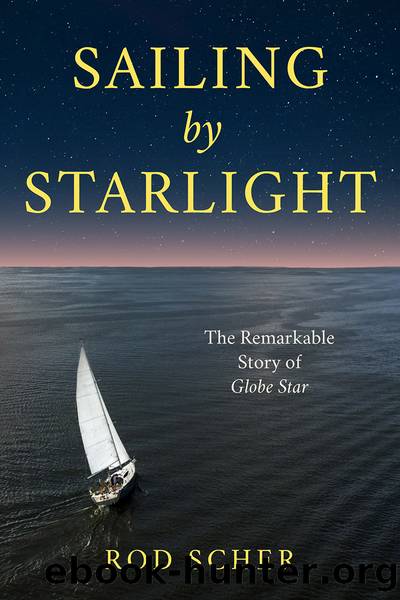Sailing by Starlight by Rod Scher

Author:Rod Scher
Language: eng
Format: epub
Publisher: Sheridan House
Published: 2022-06-17T00:00:00+00:00
Figure 12.02. Dr. Daniel Schneider is a physician and researcher with the University of Michigan Health System. (IMAGE COURTESY OF DR. DANIEL SCHNEIDER.)
âIt would be exquisitely painful. The best apples-to-apples comparison would be a ligamentous injury in a different part of the body. So, it would be very similar to a football player tearing his ACL.â3
Reducing the injury is also painful, as Creamer discovered, but the risk of leaving it separated for any length of time makes the pain of reduction worthwhile.
âIf your arm is out of the shoulder socket,â says Schneider, âthat in and of itself would risk further injury because youâve got a bone flopping in that upper arm area. If you left it alone, you could risk damage to nerves and vessels and muscles, and maybe other ligaments too.â4
Creamer was apparently one of those people whom we tend to characterize as âtoughâ because they seem inured to pain, unaffected by it. In fact, most such people are not actually unaffected, but, says Schneider, they have the ability to compartmentalize their pain and carry on.
âMost people you would describe as having a high pain tolerance are people who have much more experience or practice, probably out of necessity, of being able to compartmentalize pain,â says Schneider. âItâs not that they donât experience pain, but they realize that itâs just telling them what they already knowâthat theyâre injured and that they have to just power through.â5
This makes sense, especially when considering occupations that demand that one continue working even while in pain or in severe discomfort. That would apply to a farmer digging a lamb out of a snowdrift in subzero temperatures or a soldier manning a position in spite of having been wounded; the work is, at the moment, more important than the pain, so they simply ignore the pain for the time being. Most people can do that to some extent, but some people are better at it than most.
In Creamerâs case, says Schneider, âHe engaged that compartmentalization activity in the brain and used that to suppress the pain, even while acknowledging it. Thatâs a very powerful mechanism that exists in everybody; they just have to have the prior experiences and the tools to know how to engage those processes in the brain.â6
Obviously, we can also see this compartmentalization at work on board a sailboat. In a storm or other crisis, lives are at stake. You may be cold, wet, tired, and hungryâyou might even be injuredâbut emergencies wonât wait; there are no time-outs at sea.
Two hours later, as Jesse lay in seasick misery on the starboard settee and Marv cast about in the quarter berth for the least painful position to rest his arm, there was a crash!! on the port quarter. It sounded as if a locomotive had slammed into a truck. It was another knockdown, and this time Globe Starâs mast actually ended up beneath the water; as near as Creamer could tell later, the mast had been submerged to the point that it was 45 degrees underwater.
Download
This site does not store any files on its server. We only index and link to content provided by other sites. Please contact the content providers to delete copyright contents if any and email us, we'll remove relevant links or contents immediately.
| Camping | Excursion Guides |
| Instructional | Walking |
In a Sunburned Country by Bill Bryson(3457)
Annapurna by Maurice Herzog(3403)
How to Read Nature by Tristan Gooley(3217)
Dangerous Girls by Haas Abigail(2928)
SAS Survival Handbook by John 'Lofty' Wiseman(2639)
The Lost Art of Reading Nature's Signs by Tristan Gooley(2589)
In the Woods by Tana French(2502)
The Stranger in the Woods by Michael Finkel(2376)
Food and Water in an Emergency by Food & Water In An Emergency(2315)
Guns, Germs and Steel by Diamond Jared(2242)
Everest the Cruel Way by Joe Tasker(2214)
Wild: From Lost to Found on the Pacific Crest Trail by Cheryl Strayed(2183)
Backpacker the Complete Guide to Backpacking by Backpacker Magazine(2155)
Trail Magic by Trevelyan Quest Edwards & Hazel Edwards(2109)
Ultimate Navigation Manual by Lyle Brotherton(2086)
Sea Survival Handbook by Keith Colwell(2085)
Welcome to the Goddamn Ice Cube by Blair Braverman(1937)
Birds of the Pacific Northwest by Shewey John; Blount Tim;(1906)
The Last Flight by Julie Clark(1884)
